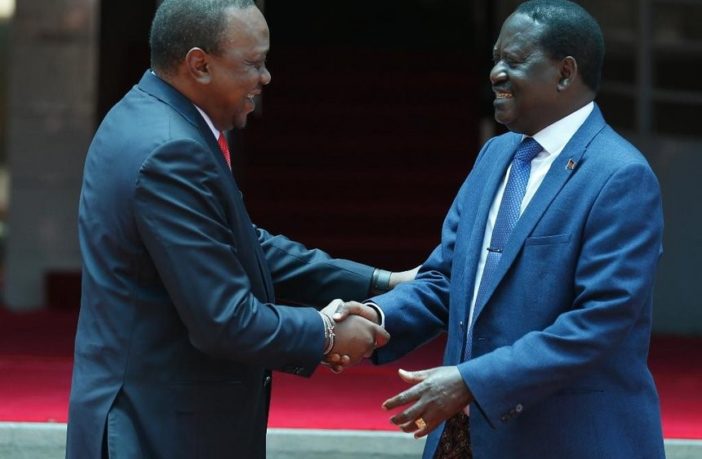- Kenya has the largest mini- grid off-grid project in Africa. The Off-Grid Solar Access Project (K-OSAP) targets 14 underserved counties.
- The country has been in a state of limbo after the presidential elections sparked turmoil as the main opposition party led by former Prime Minister Raila Odinga claimed that there was electoral fraud.
- President Uhuru Kenyatta and Raila Odinga recently met to launch a new initiative to unify the country and get the economy back on track.
On the 8th March 2018, President Uhuru Kenyatta and former Prime Minister Raila Odinga met to settle their differences after a bruising election campaign that threatened economic stability and ongoing civil unrest in Kenya. Odinga went to the courts to challenging Kenyatta’s win in last year’s August election. The Supreme Court ordered a new election in October 2018 which Odinga boycotted citing inadequate electoral reforms. The standoff has put the Kenyan economy on hold, including its rural Off-Grid Solar Access Project (K-OSAP)
K-OSAP was launched to increase access to energy services in specific rural counties that are largely underserved when it comes to electricity. The program launched at the beginning of 2017 forms part of the national target of achieving universal access to electricity by 2020. The program promotes the use of solar technology to drive electrification of households, enterprises, community facilities and water pumps. The program also includes two subcomponents: consumer education and citizen engagement plus implementation support and capacity building.
The project targets 14 out of the 47 counties in Kenya that have been defined as marginalized by the Commission on Revenue Allocation (CRA). The 14 underserved counties collectively represent 72% of the country’s total land area and 20% of the total population. The 14 counties include; Garissa, Isiolo, Kilifi, Kwale, Lamu, Mandera, Marsabit, Narok, Samburu, Taita Taveta, Tana River, Turkana, Wajir and West Pokot. There are roughly 1.2 million un-electrified households in these counties.
The generation system of each specific mini-grid will combine solar PV, battery storage and thermal units running on diesel. Mini-grids will be developed under a Public-Private-Partnership (PPP) whereby private investment and public funds co-finance construction of generation facilities, and public funding is used to construct the distribution network. The current average cost of electricity in Kenya is around KSh21.00 or US0.20 cents per kilowatt hour.
A single Private Service Provider (PSP) will be responsible for construction (and partial financing) of the generation system and for construction of the distribution network of each mini-grid. The same PSP will sign two long-term contracts with KPLC: (1) a 7-10 year power purchase agreement (PPA) for the operation and maintenance of the generation system, and recovery of the privately financed part of the investment; and (2) a 7-10 year service contract for operation and maintenance (O&M) of the distribution network, including revenue cycle services (as required).
Ultimately, after the recovery of the private investments, all assets (both generation and distribution) will be in Government of Kenya ownership. All electricity consumers supplied through mini-grids will be Kenya Power (KPLC) customers, and pay the same tariff for each category charged to users connected to the national grid, ensuring effective implementation of a national uniform tariff policy. Kenya’s Rural Electrification Authority (REA) and KPLC will jointly implement the mini-grid, off-grid components, with the procurement of lots divided among them.
Grant funding agencies are eager to subsidise such projects in order to get them across the line. Now that President Uhuru Kenyatta and Raila Odinga have settled their differences, it is the right time for independent power producers specialising in mini-grid, off-grid projects to start making themselves known in Kenya.
Author: Bryan Groenendaal











